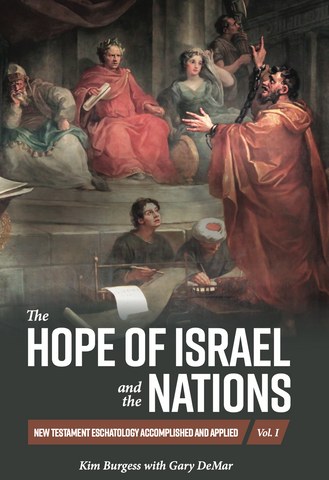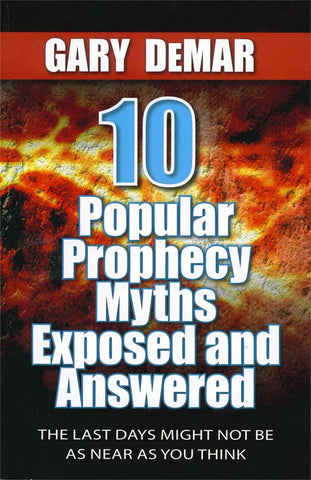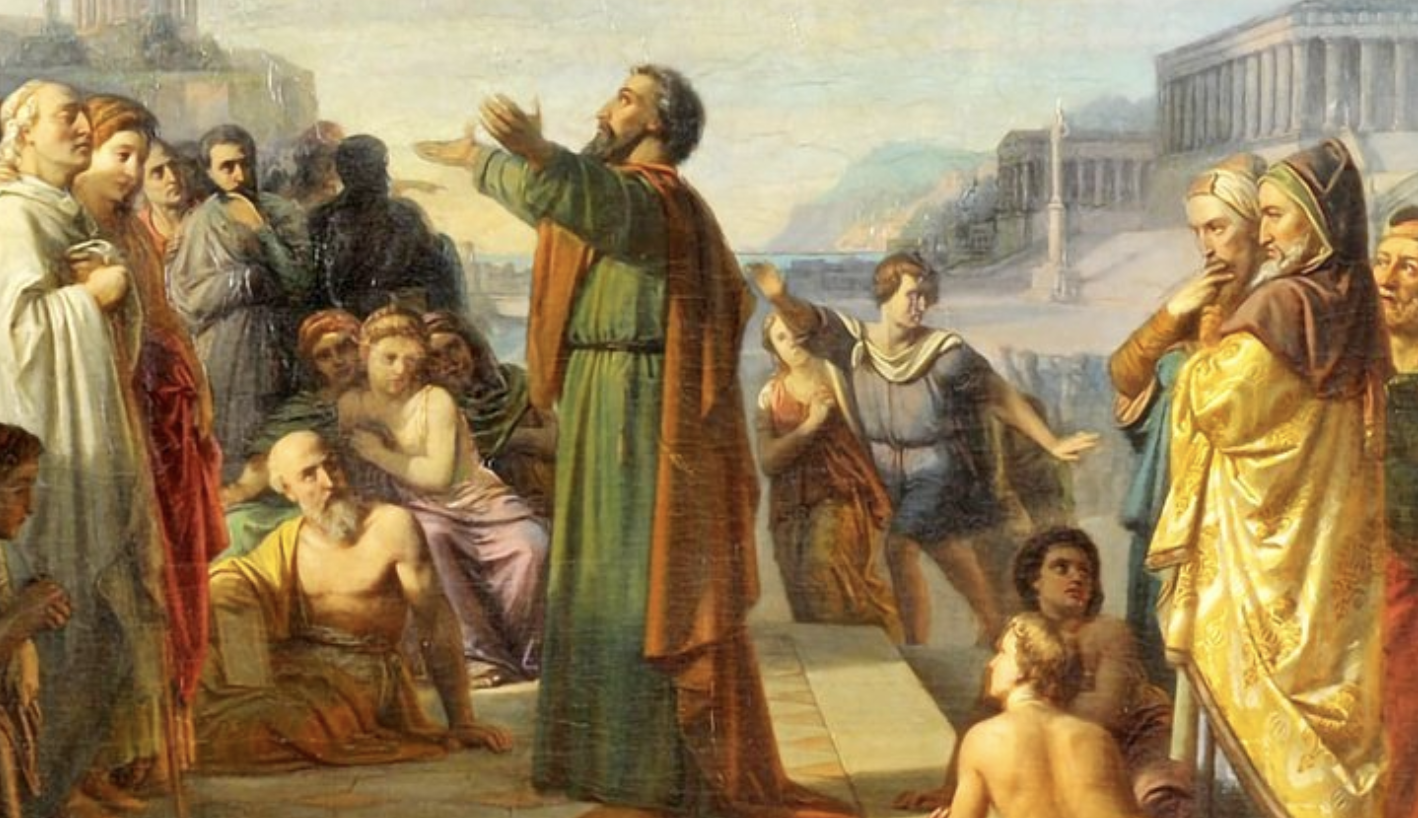In an earlier article, I mentioned Jack Hibbs and his claim that “replacement Theology” is the theory that the Christian Church has replaced Israel as the people that God no longer has a prophetic plan for Israel. He said the following:
“Friends, that’s false doctrine. Any ministry, any pastor, any group that says ‘Israel as a nation and the Jew doesn’t matter,’ that is a doctrine of heresy, pure and simple. And you need to stay clear of it.”
God has always had a prophetic plan for Israel. God also has had a plan for the nations. Today’s Jews are like the Jews of Jesus’ day. The nations today are like the nations of Jesus’ day. For dispensationalists like Hibbs, the Jews must go through another holocaust before a remnant of Jews will be saved. You can read about this feature of dispensationalism here and here. If Israel matters to God, then why would he let “the antichrist” rule Earth and kill off God’s chosen people? This doesn’t make any prophetic sense. Worse than that, it doesn’t make any biblical sense! Let’s “search the Scriptures” to see if the dispensational holocaust view of Jews is taught in the New Testament.
“To the Jew first” predominates in Scripture: “For I am not ashamed of the gospel,” Paul writes, for it is the power of God for salvation to everyone who believes, to the Jew first and also to the Greek” (Rom. 1:16; 2:9-10).[1] We see this early in the history of the New (Better) Covenant. “Now there were Jews living in Jerusalem, devout men, from every nation under heaven” (Acts 2:5). The promises that had been made to Israel were being fulfilled in the events of Pentecost and beyond:
“Now when they heard this, they were pierced to the heart, and said to Peter and the rest of the apostles, ‘Brethren, what shall we do?’ Peter said to them, ‘Repent, and each of you be baptized in the name of Jesus Christ for the forgiveness of your sins; and you will receive the gift of the Holy Spirit. ‘For the promise is for you and your children and for all who are far off, as many as the Lord our God will call to Himself.’ And with many other words he solemnly testified and kept on exhorting them, saying, ‘Be saved from this perverse generation!’ So then, those who had received his word were baptized; and that day there were added about three thousand souls. They were continually devoting themselves to the apostles’ teaching and to fellowship, to the breaking of bread and to prayer. Everyone kept feeling a sense of awe; and many wonders and signs were taking place through the apostles. And all those who had believed were together and had all things in common; and they began selling their property and possessions and were sharing them with all, as anyone might have need. Day by day continuing with one mind in the temple, and breaking bread from house to house, they were taking their meals together with gladness and sincerity of heart, praising God and having favor with all the people. And the Lord was adding to their number day by day those who were being saved” (Acts 2:37-47).
Peter’s message was to “all the house of Israel” (Acts 2:36; see Matt. 10:6, 23; 15:24). When these Israelites asked, “Brethren, what shall we [Jews] do?” (2:37), Peter told them: “For the promise is for you [Jews] and your [Jewish] children, and for all [Jews] who are far off, as many as the Lord God shall call to Himself” (2:39). Peter wrote a letter to them: “To those who reside as strangers, scattered throughout Pontus, Galatia, Cappadocia, Asia, and Bithynia, who are chosen according to the foreknowledge of God the Father, by the sanctifying work of the Spirit, to obey Jesus Christ and be sprinkled with His blood: May grace and peace be multiplied to you” (1 Pet. 1:1-2). We read something similar in the letter written by James: “James, a bond-servant of God and of the Lord Jesus Christ, To the twelve tribes who are dispersed abroad” (James 1:1). These were Jews!

The Hope of Israel and the Nations
The reader and student of the Bible must first understand the content of the New Testament writings in terms of how those in the first century would have understood it. The New Testament is written against the background of the Old Testament. The shadows of the Old were fulfilled in the reality of the New. All the rituals and ceremonies were fulfilled in Jesus. The same is true of the temple, land, blood sacrifices, the nature of redemption, the resurrection of the dead, the breaking down of the dividing wall dividing Jews and Gentiles, and so much more. The New Testament's emphasis is on the finished work of Jesus and its application, not only to that Apostolic generation but to the world today.
Buy NowSomething called “the church” was not something new in the New Testament. “The church” could not replace Israel because at first the New Testament church was exclusively Jewish (Acts 5:11;[2] 8:1-3;[3] 9:31). As anyone can see, there is nothing said or indicated that the church was something new since Israel was the church, just like Israel had been the church under the Old Covenant (see Acts 7:38: “the ekklēsia in the wilderness”). In fact, Jewish believer Dr. Michael Brown, who also brings up the Replacement Theology hoax, agrees with this assessment:
Let’s go back to the Book of Acts. The early Church was exclusively Jewish. It was almost ten years before a group of Gentiles received the gospel, and this created shock waves in Jerusalem.[4]
I cover this topic in greater detail in my book 10 Popular Prophecy Myths Exposed and Answered.

10 Popular Prophecy Myths Exposed and Answered
As a result of many failed predictions, many Christians are beginning to take a second look at a prophetic system that they were told is the only one that takes the literal interpretation of the Bible seriously. Gary DeMar has taken on the task of exposing some of the popular myths foisted upon the public by prophetic speculators.
Buy NowGod kept His promise to Israel by sending His only begotten Son. Jews were being saved by the thousands throughout the then-known world (Matt. 24:14; Rom. 1:8; Col. 1:6, 23; 1 Tim. 3:16). At the same time, there were Jews who were rejecting Jesus as the promised redeemer. Consider the following from Acts 13:46-52:
But when the Jews saw the crowds, they were filled with jealousy [see Rom. 10:19; 11:11, 14; Acts 5:17] and began to oppose what Paul was saying by insulting him. Then Paul and Barnabas boldly said: “It was necessary that God’s message be spoken to you first. But since you reject it and consider yourselves unworthy of eternal life, we now turn to the Gentiles! For this is what the Lord has commanded us: ‘I have made you a light for the Gentiles to bring salvation to the ends of the earth.’” When the Gentiles heard this, they rejoiced and glorified the message of the Lord, and all who had been appointed to eternal life believed. So the message of the Lord spread through the whole region. But the Jews incited the prominent women, who worshiped God, and the leading men of the city. They stirred up persecution against Paul and Barnabas and expelled them from their district. But they shook the dust off their feet against them and went to Iconium. And the disciples were filled with joy and the Holy Spirit.”
This passage is in keeping with all we see in the New Testament. The Jews were the first to hear the gospel.
These twelve Jesus sent out after instructing them, saying, “Do not go on a road to Gentiles, and do not enter a city of Samaritans; but rather go to the lost sheep of the house of Israel. And as you go, preach, saying, ‘The kingdom of heaven has come near’” (Matt. 10:5-6).
The Jews were the first to believe. The Jews were the first to make up the New Covenant “church” (ekklēsia). When the gospel went to the Gentiles (nations), these non-Jews did not replace Israel. The Gentiles were grafted into an already growing New Testament assembly of believers made up of those from “the house of Israel.” These truths are fundamental to New Testament theology.
The hoax of “Replacement Theology” is a theological construct based on the faulty translation of ekklēsia. The Greek word ekklēsia, most often translated “church,” was not new to the New Testament. It’s the Greek equivalent of the Hebrew word qahal and means “assembly” or “congregation.” It’s the way William Tyndale (1494-1536) translated ekklēsia. In his 1525 translation he translated ekklesia as “congregation” except for Acts 14:13 and 19:37.
In 1529 [Thomas] More wrote a treatise, the Dialogue Concerning Heresies and Matters of Religion, in which he attacked the vocabulary of the new English Bible. More chided Tyndale for “mistranslating” several words of theological importance: the translator used “love” instead of “charity” for the Greek word agape, “senior” or “elder” instead of “priest” for presbyteros, and “repentance” instead of “penance” for the Greek metanoia. As one biographer observes, More declared Tyndale guilty of deliberately replacing theological terms with words not normally used by theologians.[5] And More tried to show that by means of these “radical” translations Tyndale was subverting the authority of the church and its doctrines.[6]
Following More’s arguments, one of the requirements of the translators of the so-called Authorized or King James Version was that ekklēsia had to be translated as “church.” Rules to be Observed in the Translation of the [King James] Bible required the following: “The old Ecclesiastical Words to be kept, viz. the Word Church not to be translated Congregation &c.”[7]
As William Stafford writes, it was understood by the laity and church officials that “it was the clergy who were the ecclesia, the church.”[8] But as Tyndale saw it, “the church was not the clergy, nor was it the hierarchical, legal, and ceremonial edifice sustaining the clergy, but rather the congregation of all who responded to the word of God.”[9] If translators had followed Tyndale, there never would have been dispensationalism’s Israel-Church distinction.
The Hebrew translation of the New Testament translates the Greek ekklēsia as qahal (קָהָל), meaning “assembly” or “congregation.” The TLV (Tree of Life Version) Bible translation, published by the Messianic Jewish Family Bible Society, translates Matthew 16:18 as “community” and 18:17 as “Messiah’s community” and not “church.” The same is true of Acts 5:11: “And great fear came over the whole community and all who heard these things.” That “community” was made up exclusively of Jews.
With this background, we can understand why Stephen could describe “the children of Israel” as the “ekklēsia [whole community] in the wilderness” (Acts 7:37-38). The KJV, beholden to the Rules to be Observed in the Translation of the [King James] Bible, translated ekklēsia as “church.” This alone proves that the so-called “church” was not something new in the New Testament.
Hebrews 2:12 quotes from Psalm 22:22. The Old Testament Psalm used the word qahal and the Septuagint translated it as ekklēsia:
I will tell of Your name to my brethren;
In the midst of the assembly [קָהָל/qahal] [church?] I will praise You.
The Septuagint (LXX), the Greek translation of the Hebrew Old Testament, translate qahal in Psalm 22:22 as ekklēsia.
Hebrews 2:12 reads this way in the KJV:
I will declare thy name unto my brethren,
in the midst of the church [ekklēsia] will I sing praise unto thee.
The ekklēsia was identified with Israel long before the inauguration of the New Testament Church (ekklēsia) that was initially made up exclusively of Jews (Israelites).
The modern-day Israel-Church distinction is contrary to everything we find in the Bible. There is only one people of God and only one way of salvation for Jews and Gentiles. Today’s unbelieving Jews are no different from unbelieving Muslims, Hindus, Satanists, atheists, communists, pagans, or anyone else. All who are in Christ make up “one new man” (Eph. 2:15). All who are in Christ make up one olive tree (Rom. 11:17-24). Is God done with the Jews? He is no more done with the Jews than He is done with the world!
The Replacement Theology Hoax is theological desperation. Sound exegesis trumps gaps, postponements, two redemptive peoples of God, another rebuilt temple, red heifers, blood moons, X-marks-the-spot eclipses, modern-day Russia as Gog and Magog, any one of five rapture positions, etc.
[1] Note that not only do Jews and Gentiles find equality in Jesus Christ, but they also share in negative sanctions.
[2] “And great fear came over the whole church [ekklēsia], and over all who heard of these things.”
[3] “Saul was in hearty agreement with putting him to death. And on that day a great persecution began against the church [ekklēsia] in Jerusalem, and they were all scattered throughout the regions of Judea and Samaria, except the apostles. Some devout men buried Stephen, and made loud lamentation over him. But Saul [a Jew from the tribe of Benjamin] began ravaging the church [ekklēsia], entering house after house, and dragging off men and women, he would put them in prison.”
[4] Brown, Our Hands are Stained with Blood, chap. 8.
[5] C.H. Williams, William Tyndale (London: Nelson, 1969), 76.
[6] Riemer A. Faber, “William Tyndale’s Concept of the Church,” Christian Study Library (1994).
[7] Quoted in David Daniell, The Bible in English: It’s History and Influence (New Haven, CT: Yale University Press, 2003), 439.
[8] William S. Stafford, “Tyndale’s Voice to the Laity” in Word, Church, and State: Tyndale Quincentenary Essays, 105.
[9] Stafford, “Tyndale’s Voice to the Laity,” 106.

